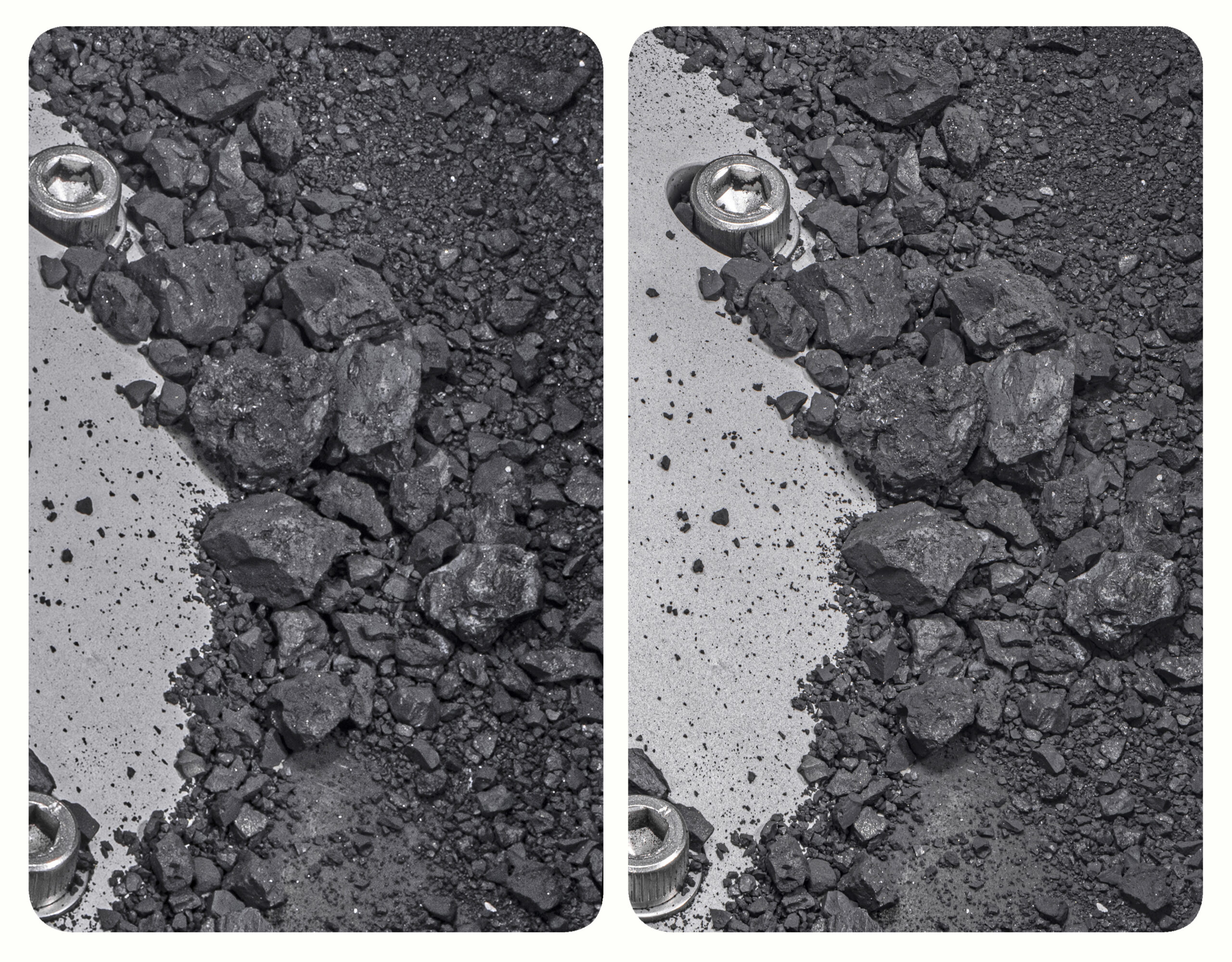Making stereoscopic images of asteroid Bennu was not part of the brief of NASA’s OSIRIS-REx mission; but we civilians, Claudia Manzoni and myself, were invited by mission principal investigator Dante Lauretta to join the science team and find opportunities for stereoscopy in the wealth of visual data acquired by the spacecraft’s cameras at Bennu.
To do this, we looked for pairs of images of Bennu’s surface taken from viewpoints some distance apart. This separation of viewpoints, known as the “baseline,” has to be just right to give us the experience of depth and reality when the images are viewed stereoscopically. Such viewing requires the left and right images to be delivered separately to our left and right eyes, which is how we see in “real life.” When this is done, the small differences between the components of the stereo pair – known as parallax differences – give our brains the opportunity to instantaneously perceive depth and solidity in the image.

In the case of the images shown here, with the Bennu sample safely delivered to planet Earth, the curation team made it easy for us. In the moments when the TAGSAM head was flipped over after removing it from the avionics deck at NASA’s Johnson Space Center in Houston, photographs from many angles were captured, enabling us to find just one (nearly!) perfect pair, showing the intimate structure of just a few grains of the dark, coal-black sample.
It’s possible to view this side-by side stereoscopic pair without a stereoscope, by relaxing the axes of the eyes, as if staring through the screen to infinity. But the best experience will be had by using a stereoscope, the same way the OSIRIS-REx mission team viewed our stereo images while the search was on to find a safe spot on asteroid Bennu’s surface for the delicate Touch-and-Go sampling maneuver.
The largest “boulders” in this picture are about 1 centimeter across. Enjoy this piece of history in the making!
–Brian May
